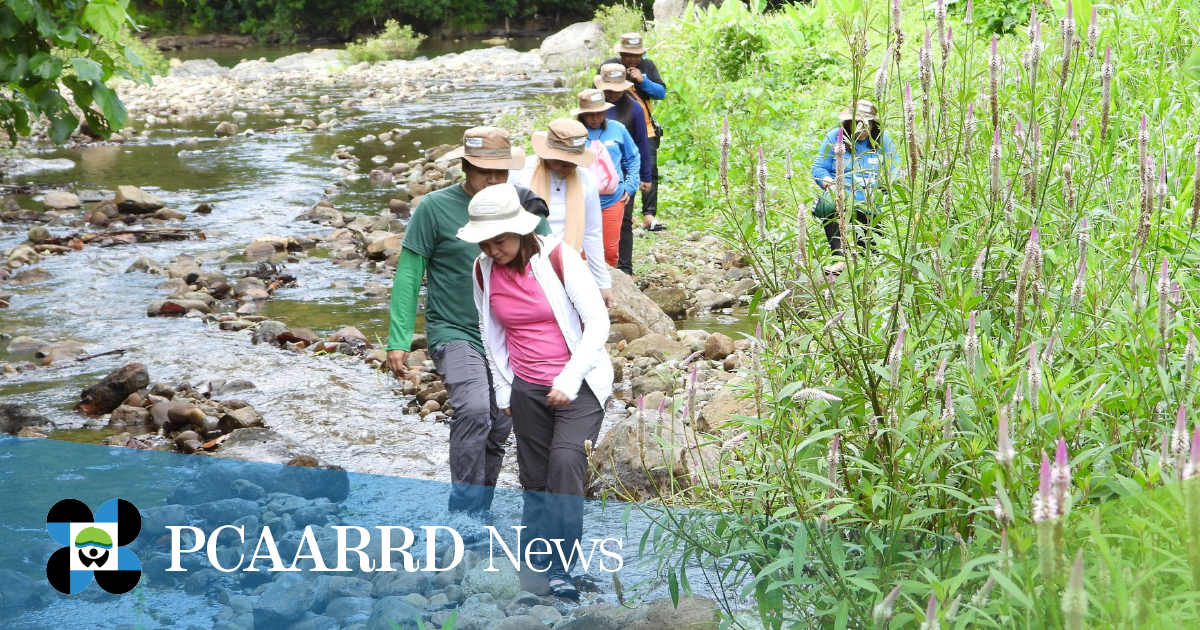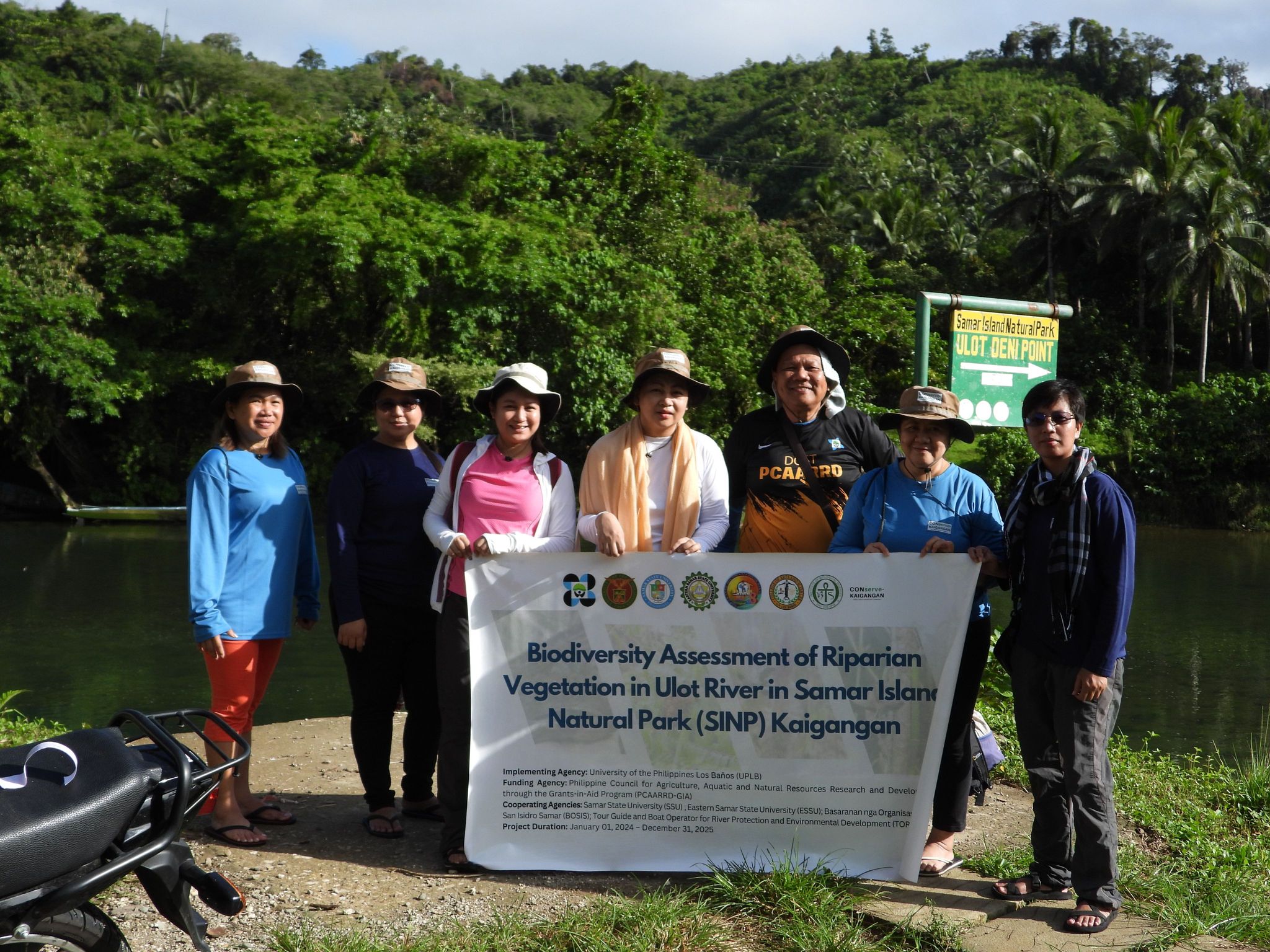
DOST-PCAARRD monitoring team from the Forestry and Environment Research Division and project staff from UPLB during the M&E activity in Ulot River. (Image credit: FERD, DOST-PCAARRD)
Empowering the local ecotourism industry and biodiversity, CONserve-KAIGANGAN Program’s latest project will focus on Samar’s longest river, the Ulot River, located inside Samar Island Natural Park (SINP), which is currently affected negatively by climate change.
Funded and supported by the Philippine Council for Agriculture, Aquatic and Natural Resources Research and Development of the Department of Science and Technology (DOST-PCAARRD), the project, “Biodiversity Assessment of Riparian Zone in Ulot River in Samar Island Natural Park Kaigangan,'' aims to assess the biodiversity of the riparian ecosystem housed in SINP. The project will also supplement further conservation efforts established by the program’s previous projects.
The project is the third installment of the CONserve-KAIGANGAN Program of the University of the Philippines Los Banos (UPLB) and the re-entry proposal of DOST-PCAARRD-GREAT Scholar and Co-Project Leader Anne Frances V. Buhay.
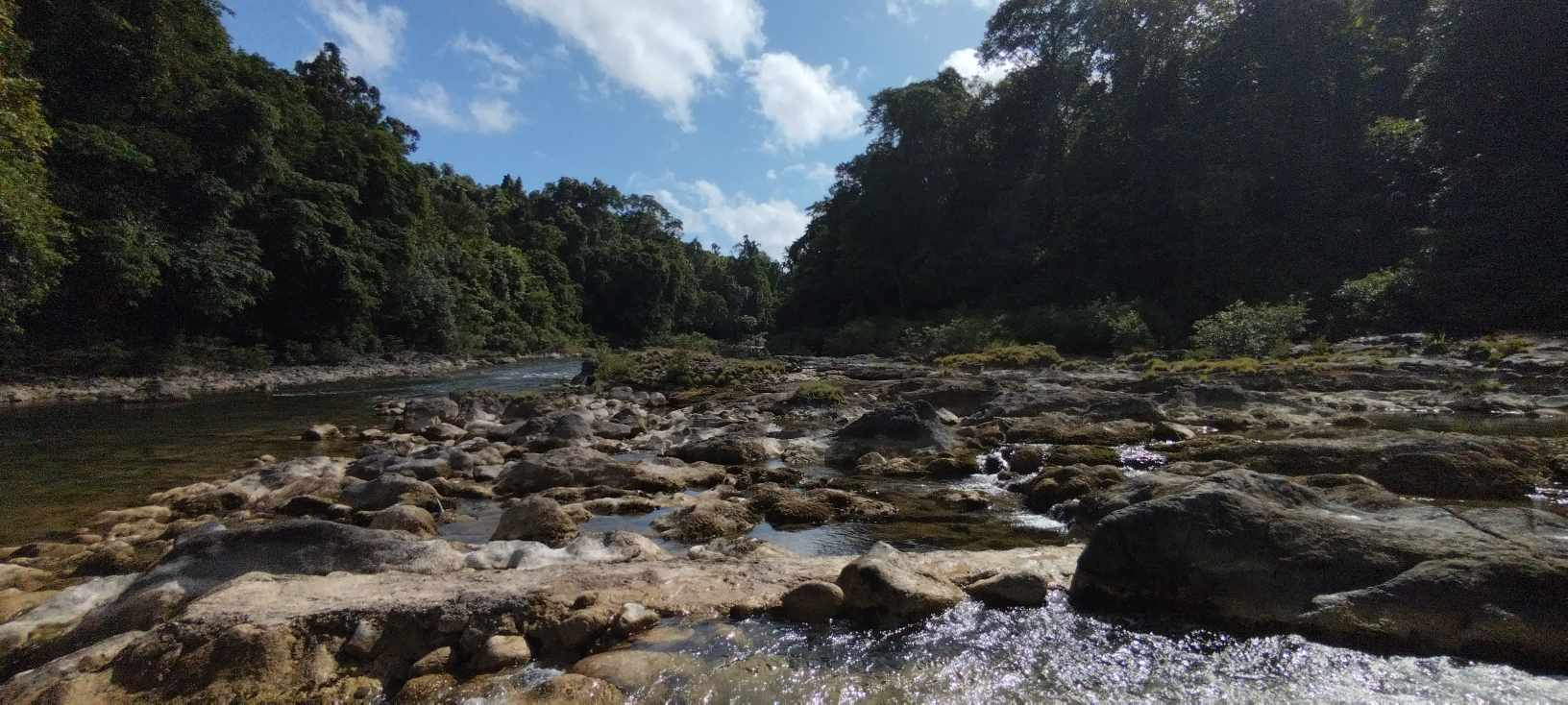
As part of SINP riparian system, Ulot River offers major contribution to the socioeconomic development of Samar Islands’ local community through alternative livelihood from ecotourism activities such as extreme boat rides and river cruises offered by the Tour Guide and Boat Operators for Environmental Development Organization (TORPEDO).
However, due to unusual heavy rains causing floods and river overflows, the project team recognized the importance of assessing the existing condition of the riparian vegetation of SINP. In addition to plant and animal inventory, the study is expected to craft recommendations for biodiversity conservation and possible strategies for flooding while engaging the local communities.
With Project Leader Inocencio E. Buot, Jr. at the helm of the CONserve-KAIGANGAN Program, its preceding projects had already documented the biodiversity of Samar Island’s forest over limestone ecosystem, locally referred to as ‘kaigangan,’ covering plant, animal, and microbial species. These previous outputs had been instrumental in SINP’s bid for its nomination as a UNESCO World Heritage Site alongside the introduction of new species and distribution records.
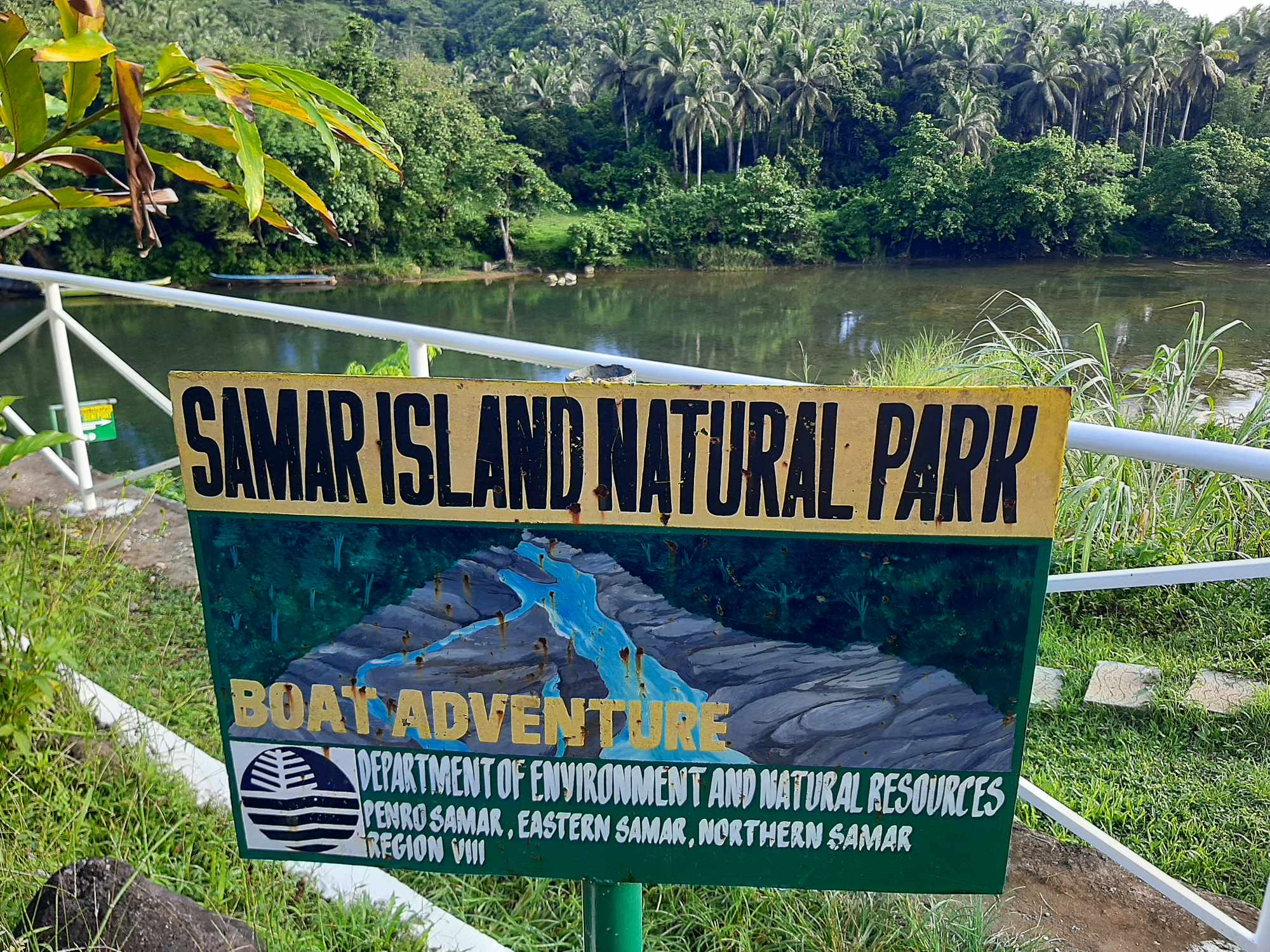
The river also offers livelihood opportunities for the locals through ecotourism activities. (Image credit: FERD, DOST-PCAARRD)
As part of the Council’s monitoring and evaluation (M&E), the Forestry and Environment Research Division (FERD) visited the project site in Paranas, Samar last April 22–23, 2024. The visit was kicked off by a courtesy call to SINP staff and a cruise along the river to observe established plots for a biodiversity survey.
The FERD M&E team, headed by Director Nimfa K. Torreta, was accompanied by Ms. Diana Shayne Balindo of Samar State University (SSU) along with the UPLB project team, Eastern Samar State University (ESSU), and the project's partner people’s organization Basaranan nga Organisasyon han San Isidro Samar (BOSIS). The team also visited the kaigangan nursery in Paranas, which was established through the CONserve-KAIGANGAN Program. The activity commenced with a fellowship with the members of BOSIS and a quick visit to SSU.
Also part of the monitoring team were S&T Program Manager for Biodiversity Christine Santiago, FERD Assistant Director Marcelino Siladan, and ISP Manager for Rubber and S&T Program Manager for Environmental Services (Climate Change) John Benrich Zuñiga.
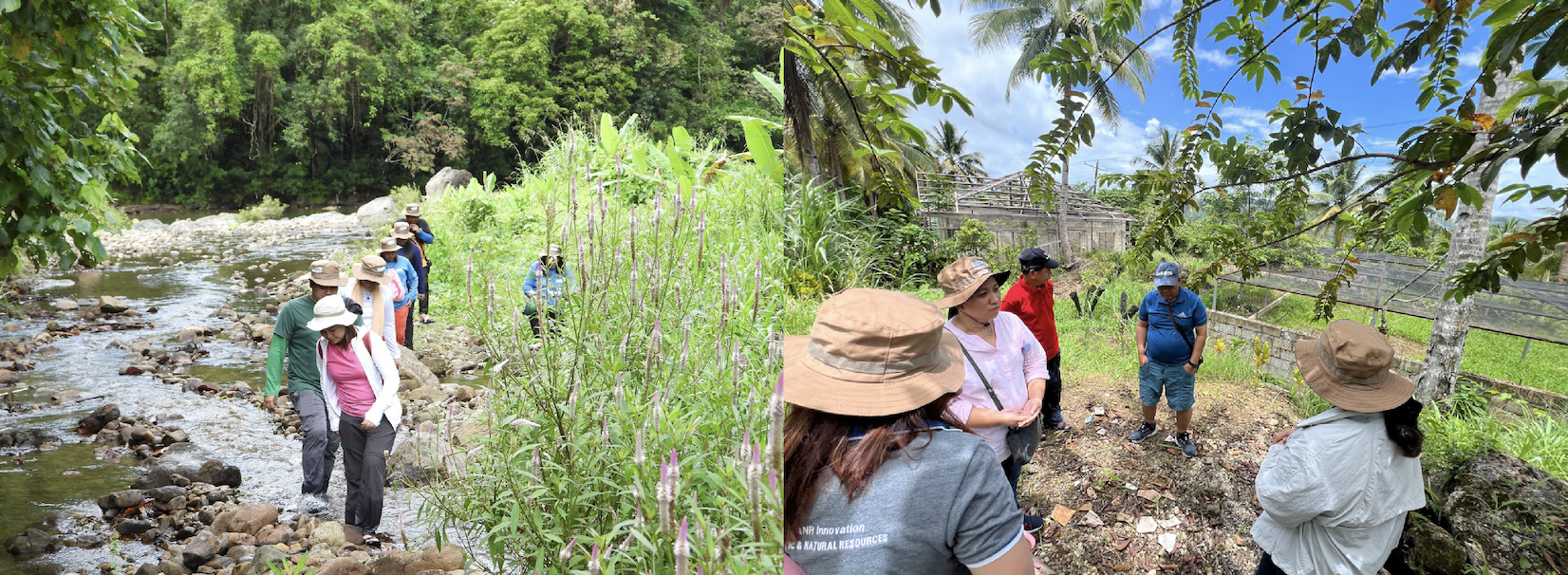
DOST-PCAARRD’s monitoring team was accompanied by UPLB’s project staff, SSU, ESSU, and BOSIS on the visit to Ulot River (left) and kaigangan nursery (right). (Image credit: FERD, DOST-PCAARRD)

